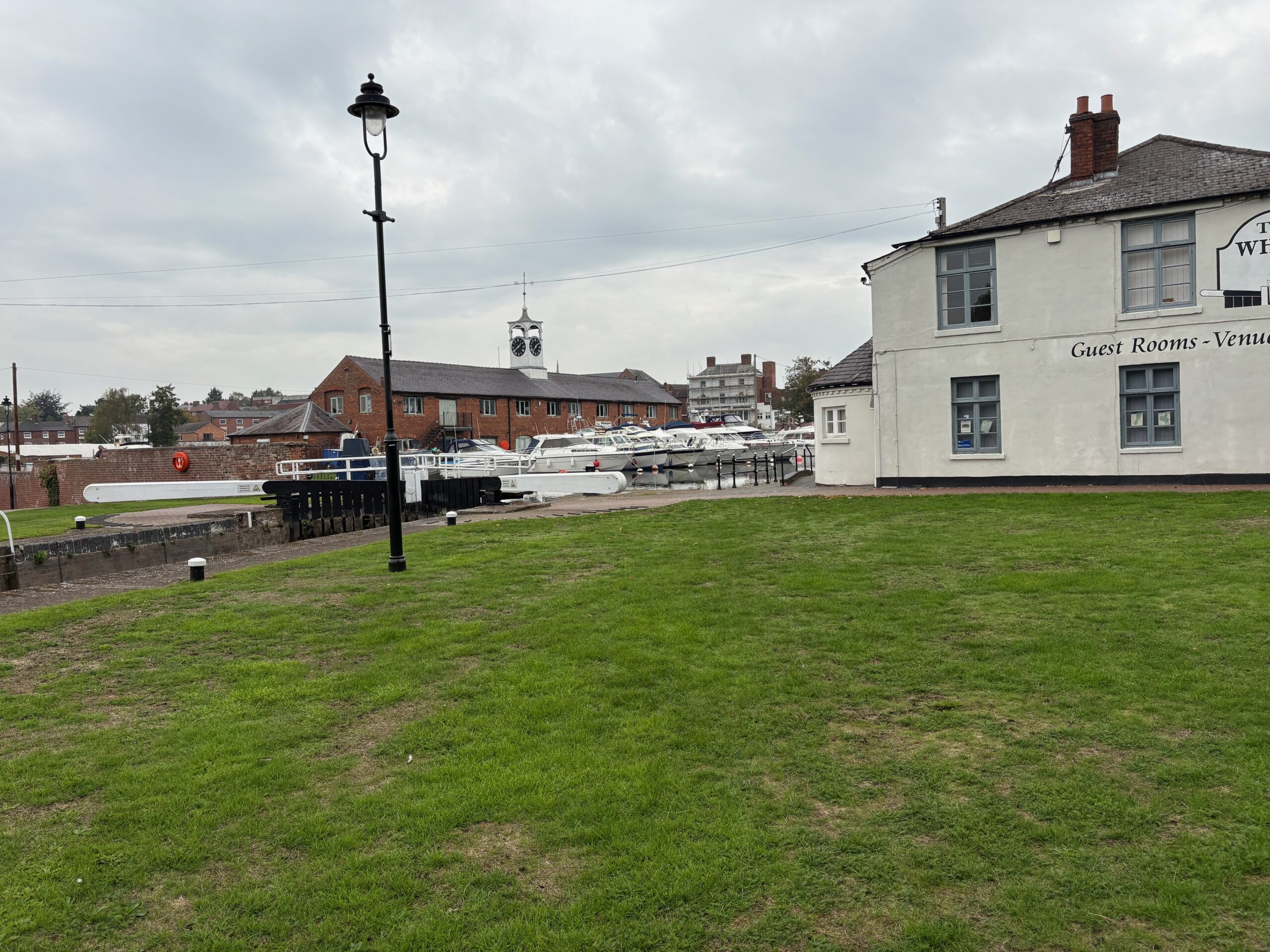The Staffordshire and Worcestershire Canal stands as one of England’s most historically significant waterways, weaving a picturesque 46-mile route from Great Haywood Junction in Staffordshire down to Stourport-on-Severn in Worcestershire. This remarkable canal, which opened in 1772, represents a triumph of 18th-century engineering under the guidance of the renowned James Brindley.
Originally conceived as a vital commercial artery, the canal was designed to connect the industrial heartlands of the Midlands with the River Severn, providing a crucial link for transporting coal, iron, and manufactured goods to markets across Britain and beyond. The waterway’s 41 locks tell the story of Brindley’s ingenious solution to the challenging terrain, allowing boats to navigate the significant changes in elevation between the two counties.
During its industrial heyday, the canal bustled with narrow boats carrying coal from the Staffordshire coalfields, pottery from the famous Stoke-on-Trent potteries, and iron goods from the Black Country’s foundries. The waterway became the economic lifeline for countless communities along its banks, fostering the growth of canal-side industries and creating the charming towpath settlements that visitors can still explore today.
What makes this canal particularly captivating for modern visitors is its remarkable diversity of landscapes and heritage. The northern section winds through the picturesque Staffordshire countryside, passing the elegant Shugborough Estate and offering glimpses of rural England at its finest. As the canal progresses southward, it encounters the historic market town of Penkridge before entering Worcestershire’s gentler rolling hills.
The southern terminus at Stourport-on-Severn deserves special mention as one of Britain’s first planned canal towns. Created specifically to serve the canal’s junction with the River Severn, Stourport features beautifully preserved Georgian architecture and a fascinating complex of canal basins that demonstrate the sophisticated engineering of the era.
Today, the Staffordshire and Worcestershire Canal has found new life as a leisure waterway, attracting narrowboat holidaymakers, walkers, and cyclists who appreciate its peaceful atmosphere and rich heritage. The towpath provides an excellent walking route, offering encounters with abundant wildlife and passing through charming villages where traditional canal pubs serve as welcoming stops for refreshment.
The canal’s locks, whilst requiring effort from boaters, are generally well-maintained and add to the authentic canal experience. Many feature the original Brindley-designed mechanisms, providing a tangible connection to the waterway’s 18th-century origins.
For those seeking a quintessentially English canal experience, the Staffordshire and Worcestershire Canal delivers in abundance. Its combination of industrial heritage, natural beauty, and architectural interest creates a journey through time that reveals both the ingenuity of Britain’s canal builders and the enduring appeal of these remarkable waterways. Whether explored by boat or on foot, this historic canal offers visitors a genuine taste of Britain’s industrial past set within some of the Midlands’ most attractive countryside.
Key Locations Along the Staffordshire and Worcestershire Canal
– Tixall Wide
– Stafford
– Penkridge
– Gailey Wharf
– Wolverhampton
– Compton Lock
– Wombourne
– Swindon
– Stourton Junction
– Kinver
